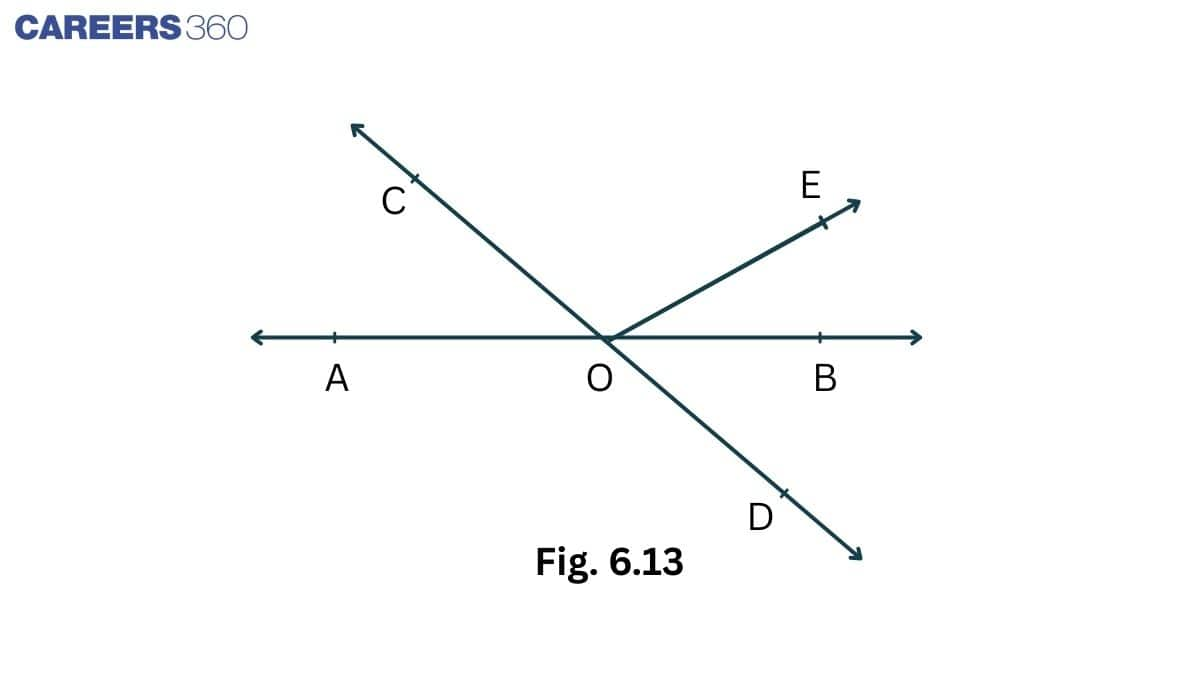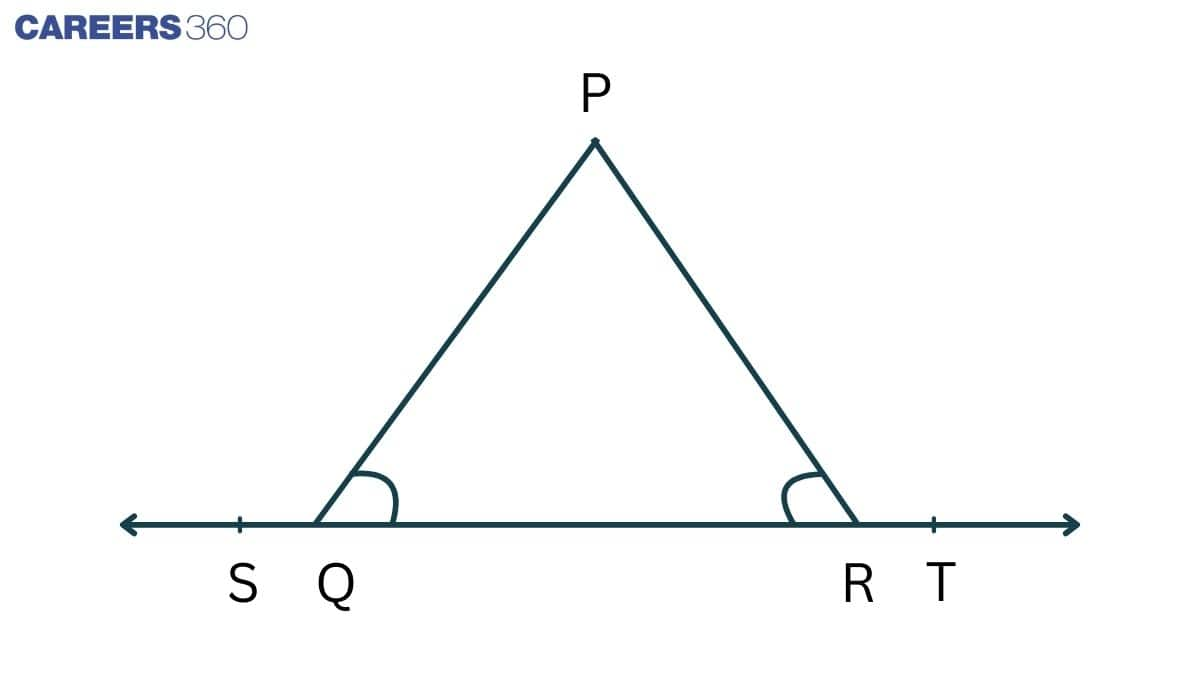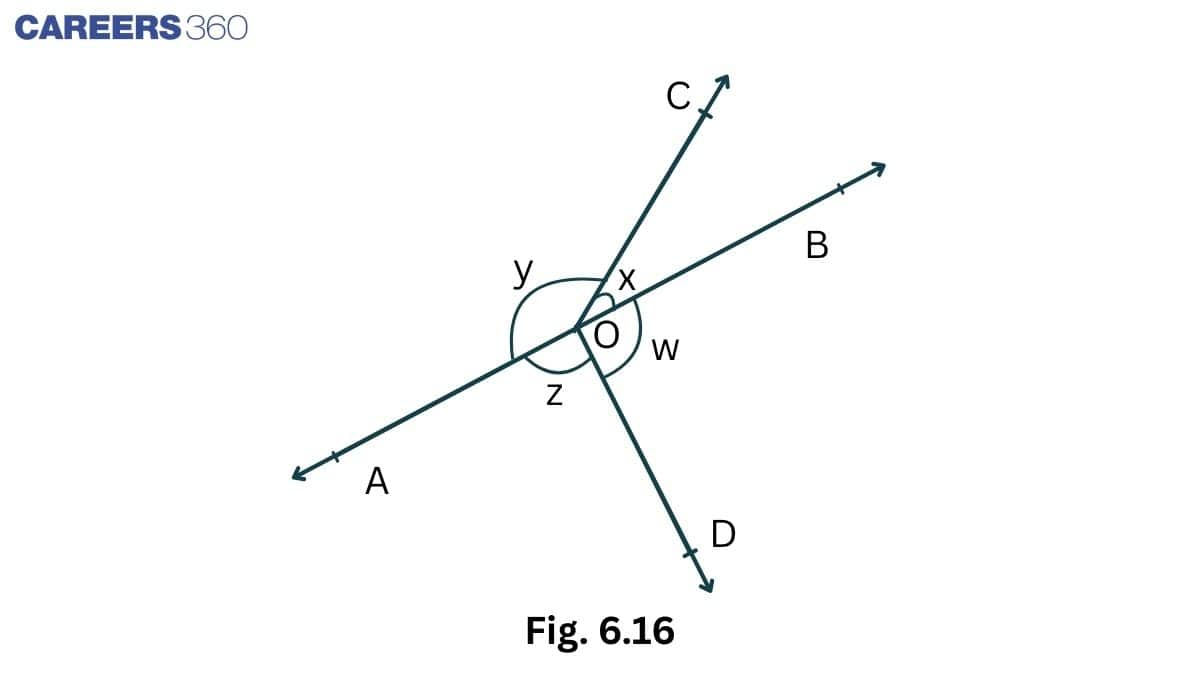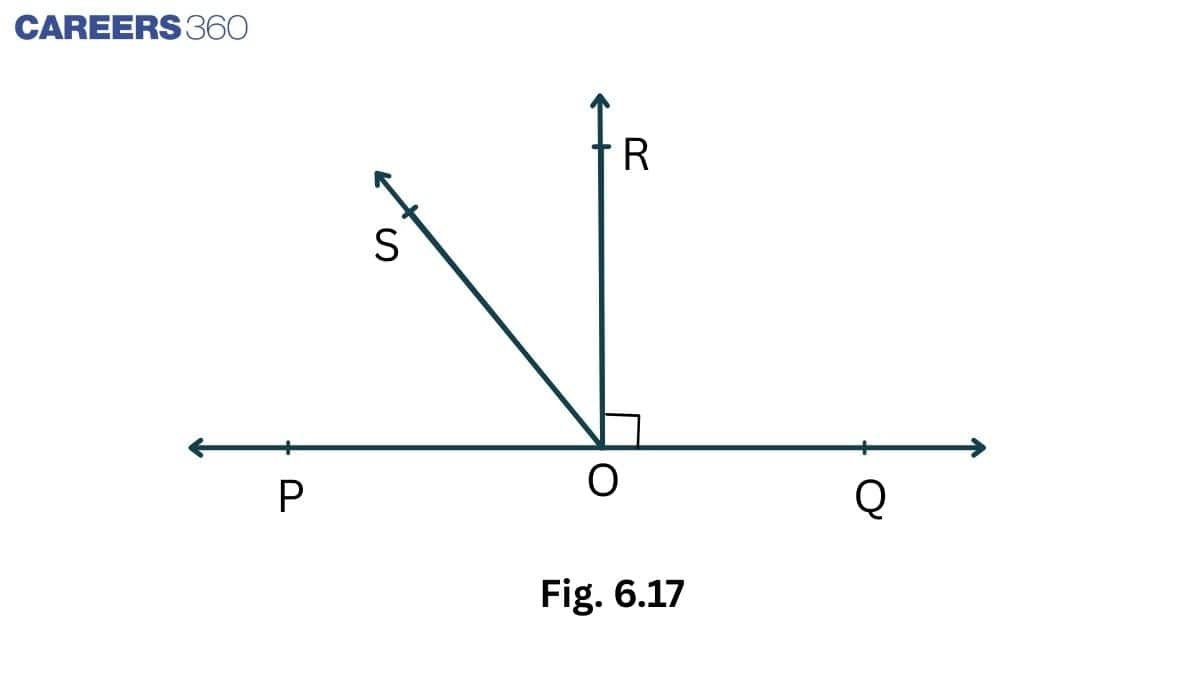NCERT Solutions for Class 9 Maths Chapter 6 Exercise 6.1 - Lines and Angles
A line is a one-dimensional figure that extends infinitely in both directions. A line with two endpoints is referred to as a line segment, and a portion of a line with one endpoint is referred to as a ray. Collinear points are those that have three or more points on the same line; otherwise, they are non-collinear points. When two rays originate from the same endpoint, an angle is formed. The rays that form an angle are referred to as the angle's arms, and the endpoint is referred to as the vertex of the angle.
This Story also Contains
- NCERT Lines and Angles Class 9 Maths Chapter 6 Exercise: 6.1
- Topics covered in Chapter 6, Lines and Angles: Exercise 6.1
- NCERT Solutions of Class 9 Subject Wise
- NCERT Subject-Wise Exemplar Solutions
In Class 9 Maths exercise 6.1, we get to know that an acute angle has a range of 0° to 90°, whereas a right angle has a value of 90°. An obtuse angle is greater than 90° but less than 180°. Also, keep in mind that a straight angle equals 180°. A reflex angle is an angle that is greater than 180° but less than 360°. Furthermore, two angles with a sum of 90° are referred to as complementary angles, while two angles with a sum of 180° are referred to as supplementary angles. Students can go through the NCERT Solutions for further study and can download related NCERT Books.
NCERT Lines and Angles Class 9 Maths Chapter 6 Exercise: 6.1

Solution:
Given that,
AB is a straight line. Lines AB and CD intersect at O. $\angle AOC + \angle BOE = 70^0$ and $\angle$ BOD = $40^0$
Since AB is a straight line
$\therefore$ $\angle$ AOC + $\angle$ COE + $\angle$ EOB = $180^0$
$\Rightarrow \angle COE = 180^0-70^0=110^0$ [since $\angle AOC + \angle BOE = 70^0$ ]
So, reflex $\angle$ COE = $360^0-110^0 = 250^0$
It is given that AB and CD intersect at O
Therefore, $\angle$ AOC = $\angle$ BOD [vertically opposite angle]
$\Rightarrow \angle COA = 40^0$ [ GIven $\angle$ BOD = $40^0$ ]
Also, $\angle AOC + \angle BOE = 70^0$
So, $\angle$ BOE = $30^0$
Q2. In Fig. 6.14, lines XY and MN intersect at O. If $\angle POY = 90^o$ and a : b = 2 : 3, find c.

Solution:
Given that,
Line XY and MN intersect at O and $\angle$ POY = $90^0$ also $a:b = 2:3 \Rightarrow b = \frac{3a}{2}$ ..............(i)
Since XY is a straight line
Therefore, $\\a+b+\angle POY = 180^0\\ a+b = 180^0-90^0 = 90^0$ ...........(ii)
Thus, from eq (i) and eq (ii), we get
$\\\Rightarrow \frac{3a}{2}+a = 90^0\\$
$\\\Rightarrow a = 36^0\\$
So, $b = 54^0\\$
Since $\angle$ MOY = $\angle$ c [vertically opposite angles]
$\angle$ a + $\angle$ POY = c
$126^0 =c$
Q3. In Fig. 6.15, $\angle$ PQR = $\angle$ PRQ, then prove that $\angle$ PQS = $\angle$ PRT.

Solution:
Given that,
ABC is a triangle such that $\angle$ PQR = $\angle$ PRQ and ST is a straight line.
Now, $\angle$ PQR + $\angle$ PQS = $180^0$ {Linear pair}............(i)
Similarly, $\angle$ PRQ + $\angle$ PRT = $180^0$ ..................(ii)
equating the eq (i) and eq (ii), we get
$\angle PQR +\angle PQS =\angle PRT + \angle PRQ$ {but $\angle$ PQR = $\angle$ PRQ }
Therefore, $\angle$ PQS = $\angle$ PRT
Hence proved.
Q4 In Fig. 6.16, if x + y = w + z , then prove that AOB is a line.

Solution:
Given that,
$x+y = z+w$ ..............(i)
It is known that, the sum of all the angles at a point = $360^0$
$\therefore$ $x+y+z+w=360^0$ ..............(ii)
From eq (i) and eq (ii), we get
$\\2(x+y)=360^0\\ x+y = 180^0$
Hence proved AOB is a line.

Solution:
Given that,
POQ is a line, OR $\perp$ PQ and $\angle$ ROQ is a right angle.
Now, $\angle$ POS + $\angle$ ROS + $\angle$ ROQ = $180^0$ [since POQ is a straight line]
$\\\Rightarrow \angle POS + \angle ROS = 90^0\\ \Rightarrow \angle ROS = 90^0-\angle POS$ .............(i)
and, $\angle$ ROS + $\angle$ ROQ = $\angle$ QOS
$\angle ROS = \angle QOS -90^0$ ..............(ii)
Add the eq (i ) and eq (ii), we get
$\angle \textup{ROS} = \frac{1}{2}(\angle \textup{QOS} - \angle \textup{POS})$
Hence proved.
Solution:

Given that,
$\angle$ XYZ = $64^0$ and XY produced to point P and Ray YQ bisects $\angle$ ZYP $\Rightarrow \angle QYP = \angle ZYQ$
Now, XYP is a straight line
So, $\angle$ XYZ + $\angle$ ZYQ + $\angle$ QYP = $180^0$
$\Rightarrow 2(\angle QYP )=180^0 - 64^0 = 116^0$
$\Rightarrow (\angle QYP )= 58^0$
Thus reflex of $\angle$ QYP = $360^0- 58^0 = 302^0$
Since $\angle$ XYQ = $\angle$ XYZ + $\angle$ ZYQ [ $\because$ $\angle QYP = \angle ZYQ$
$\angle XYQ$ = $64^0+58^0 = 122^0$
Also Read:
Topics covered in Chapter 6, Lines and Angles: Exercise 6.1
1. It includes basic definitions of lines, line segments, angles, rays, colinear points, and noncolinear points.
2. In this chapter, types of angles are included that are defined according to the measurement, like obtuse, acute, right angle and reflex angle.
3. It also covers intersecting and non-intersecting lines, linear pair angles, vertically opposite angles and angle sum property.
Also see
NCERT Solutions of Class 9 Subject Wise
Students must check the NCERT solutions for Class 9 Maths and Science given below:
NCERT Subject-Wise Exemplar Solutions
Students must check the NCERT exemplar solutions for Class 9 Maths and Science given below:
Frequently Asked Questions (FAQs)
This exercise is about lines and angles, types of angles like vertically opposite angles and axioms and concepts like parallel lines and pair of angles.
An angle is a figure which is formed by two rays, called the sides of the angle, both of which shares a common endpoint, called the vertex of the angle.
If we have three or more points that lie on the same line then they are called collinear points.
There are various types of angles are:
Acute angle
Right angle
Obtuse angle
Straight angle
Reflex angle
A reflex angle is an angle greater than 180° and less than 360°.
When we have two or more lines meeting or crossing each other in a plane, they are termed as intersecting lines.
When we have two lines sharing a common endpoint, called Vertex then an angle that is formed between these two lines is known as the pair of angles.
When we have two lines intersecting each other, the opposite angles are equal. These angles are known as the vertically opposite angles because they are equal and opposite to each other at the vertex.
Popular Questions
Courses After 12th
Applications for Admissions are open.
This ebook serves as a valuable study guide for NEET 2025 exam.
NEET Previous 10 Year Questions
Get nowThis e-book offers NEET PYQ and serves as an indispensable NEET study material.
JEE Main Important Physics formulas
Get nowAs per latest syllabus. Physics formulas, equations, & laws of class 11 & 12th chapters
JEE Main Important Chemistry formulas
Get nowAs per latest syllabus. Chemistry formulas, equations, & laws of class 11 & 12th chapters
JEE Main high scoring chapters and topics
Get nowAs per latest 2024 syllabus. Study 40% syllabus and score upto 100% marks in JEE
JEE Main Important Mathematics Formulas
Get nowAs per latest syllabus. Maths formulas, equations, & theorems of class 11 & 12th chapters
